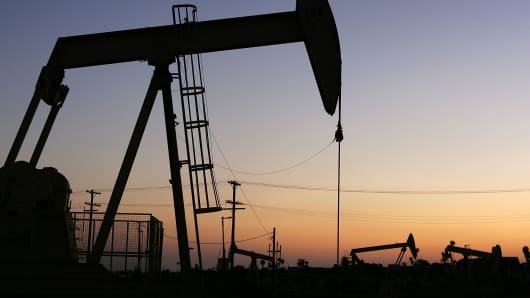Scott Tinker, director of the Bureau of Economic Geology at the University of Texas at Austin, said the study made him more confident about the amount of supply. The study was conducted by the Bureau of Economic Geology.
Tinker and his team will be completing similar studies of three other major U.S. shale gas basins by the end of this year, and they also plan to study oil fields in 2014.
In the Barnett, the study examined production from more than 16,000 individual wells through 2011. The study was more thorough than others that have relied on an aggregate view of production.
There is concern that this new "unconventional" oil and gas supply is limited, and that new supply will diminish quickly. There are also fears that the drilling, mostly on private land, will create environmental issues, and could be blocked in some areas, such as New York, or ultimately stymied by new regulation. Then there are worries that exporting oil and gas will drive prices even higher, and take away a rich resource from America's future.
But the shale resources are turning out to be even richer than expected, in both gas and oil. "There's a great expression in the oil business: 'Oil's been found where it's been found before," said Tinker. "These big oil and gas rich basins already are producing from the conventional reservoirs that leaked off of the shale. Most of these big basins — the Permian Basin, the Bakken — these have rich source rocks."
"The source rocks are the kitchen where the oil and gas are cooking, and the gas and oil leaked out of the kitchen into the conventional reservoir. We've drilled the conventional reservoir," he said. "There's still some to be drilled, but the kitchen is what we're drilling now, and it contains a lot more oil and gas than what was leaked."
Tinker is more confident than ever about the supply of gas after studying Barnett, but that field cannot be looked at in isolation, he said.
"It gives us tremendous confidence of where they are," he said of the gas resources. His group is also studying the Fayetteville and Haynesville fields, and is just starting on the Marcellus, located in Ohio, Pennsylvania, and New York.
(Read More: Buffett to Cramer: 'Real Money' Spent on NatGas Rail Conversions)
"Marcellus is in very early stages. There's just so much acreage that has not been drilled yet. The early production is substantial. This is a big field and people know that," he said. "There could be other kind of things, regulation and public concerns, but if you just go on the economic, the engineering and the geology, it's substantial."
Tinker said the study did not change his view so much on the amount of resource, but the fact that it's there. As for the U.S. bounty of natural gas: "It's real," he said.
Thanks to new drilling techniques, there is an estimated 2,200 trillion cubic feet of recoverable natural gas in the U.S. — or a century's worth — and there are billions of barrels of oil in rock formations, spanning the continent from California to Pennsylvania.
The U.S. has total technically recoverable resources equaling 223 billion barrels when all potential oil offshore, in Alaska, and in tight oil zones is taken into account, according to John Staub, an analyst with the Energy Information Administration.
Of the 223 billion barrels, there are estimated to be 49 billion in offshore drilling zones off the lower 48 states; there's another 24 billion in Alaska, but the tight oil resource, the newcomer, is expected to be 58 billion barrels, said Staub.



